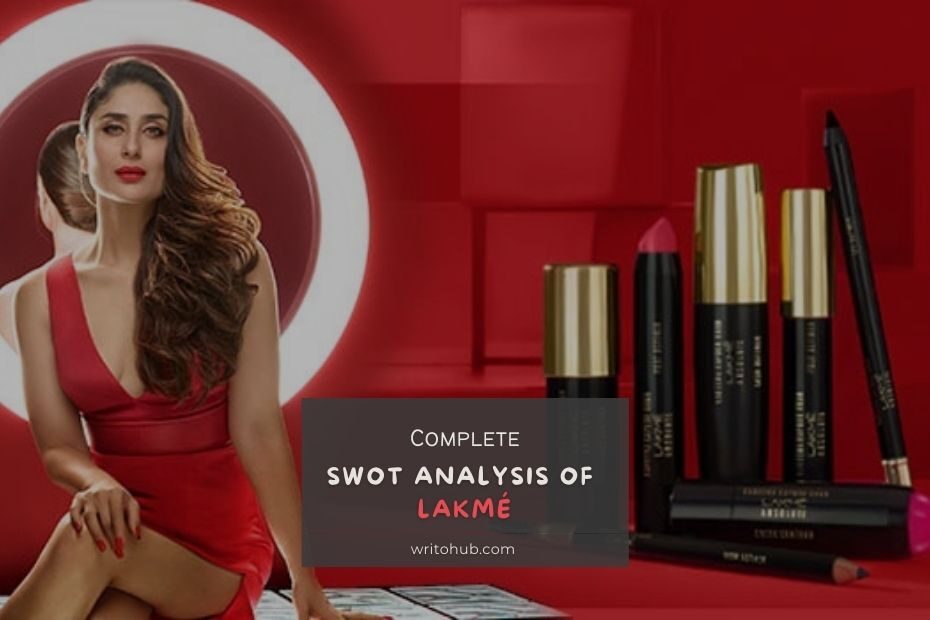Lakmé, a renowned cosmetics and beauty brand in India, operates in a highly competitive industry.
A SWOT analysis of Lakmé reveals its strengths, weaknesses, opportunities, and threats, offering insights into its strategic position in the dynamic market.
Strengths in the SWOT Analysis of Lakmé
- Strong Brand Recognition: Lakmé enjoys strong brand recognition and trust in India, known for its quality and extensive beauty product range.
- Wide Product Portfolio: The company offers a diverse range of beauty products, including skincare, makeup, and haircare, catering to various consumer needs.
- Heritage and Legacy: Lakmé’s long-established presence in the Indian market has garnered a loyal customer base and a deep connection with Indian consumers.
- Professional Partnerships: Lakmé collaborates with beauty professionals, salons, and makeup artists, enhancing its credibility and relevance in the beauty industry.
- Innovation and Trends: Lakmé consistently introduces innovative products and stays aligned with global beauty trends.
Weaknesses in the SWOT Analysis of Lakmé
- Premium Pricing: Lakmé’s premium pricing strategy may limit market share in price-sensitive segments, particularly in a price-conscious market like India.
- Intense Competition: The Indian beauty and cosmetics industry is highly competitive, with several international and domestic brands vying for market share.
- Counterfeit Products: The cosmetics industry is vulnerable to counterfeit or imitation products, which can harm brand reputation and customer trust.
- Environmental Concerns: Beauty brands are increasingly scrutinized for their environmental impact, including packaging and product ingredients, which can affect Lakmé’s image.
- Supply Chain Challenges: Managing a complex supply chain for cosmetics and personal care products can expose the company to supply chain disruptions.
Opportunities in the SWOT Analysis of Lakmé
- Digital Transformation: Investing in e-commerce and digital marketing can expand Lakmé’s market reach and enhance customer engagement, especially among tech-savvy Indian consumers.
- Sustainability Initiatives: Strengthening sustainability efforts in packaging, sourcing, and product development can resonate with environmentally conscious consumers.
- Global Expansion: Exploring opportunities in international markets can diversify revenue sources and introduce Lakmé to a broader audience.
- Personalization: Offering personalized beauty solutions through data-driven strategies can enhance customer satisfaction and loyalty.
- Men’s Grooming: Tapping into the growing men’s grooming market by introducing tailored products and marketing can diversify product lines.
Threats in the SWOT Analysis of Lakmé
- Economic Downturns: Economic recessions and reduced consumer spending can impact the demand for non-essential beauty products.
- Regulatory Changes: Evolving regulations related to cosmetics ingredients, safety standards, and animal testing can impact product development and compliance costs.
- Consumer Trends: Shifting consumer preferences, such as clean beauty and organic products, can impact product demand and market competition.
- Counterfeit Products: The cosmetics industry faces ongoing issues related to counterfeit or imitation products that can harm brand reputation.
- Supply Chain Disruptions: Ongoing supply chain disruptions, geopolitical tensions, and trade disputes can affect production and product availability.
Conclusion
Lakmé’s SWOT analysis highlights its position as a prominent beauty brand in India with a rich heritage.
To maintain and enhance its market presence, Lakmé must leverage its strengths, address weaknesses, seize opportunities, and mitigate threats while adapting to changing consumer preferences, environmental considerations, and competitive dynamics in the Indian beauty and cosmetics industry.
